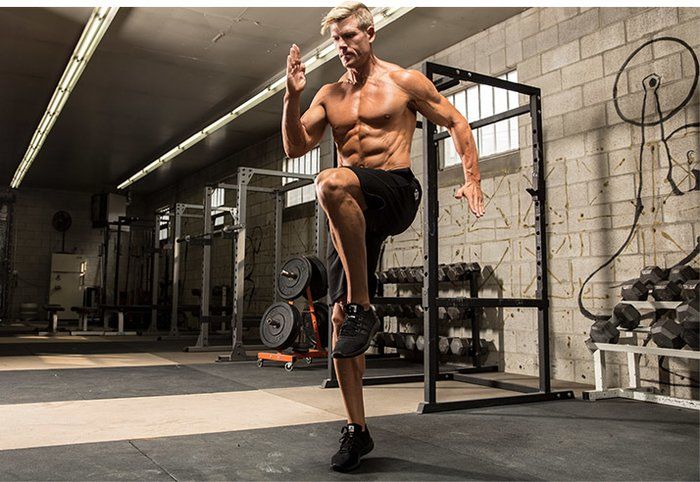What Is Steady State Cardio? A Guide to Effective Cardio Exercises
Aug-16-2024
Steady-state cardio is a continuous, consistent workout, unlike interval training where energy output fluctuates. It involves any cardiovascular or aerobic activity performed at a constant intensity for an extended duration—typically starting from 10 to 15 minutes for beginners and extending up to 20 to 90 minutes for more experienced athletes. This steady effort qualifies as steady-state cardio training.
What Is Steady State Cardio?

Steady-state cardio, also known as Zone 2 heart rate training, involves light to moderate intensity cardiovascular sessions lasting 30 to 120 minutes, performed 2-3 times per week. The objective is to maintain a consistent heart rate within your Zone 2 range, rather than allowing it to fluctuate.
While most people recognize that cardiovascular exercise is essential for a balanced fitness routine, relying solely on high-intensity workouts like spin classes or boot camps means you're missing out on significant benefits. Incorporating steady-state cardio—arguably the most crucial element of your training—can help you achieve those gains.
What Makes Steady State Cardio Beneficial?
Incorporating a steady-state cardio program into your regular exercise routine offers numerous benefits. Not only can steady-state cardio exercises aid in weight loss, but they also boost endurance. Additionally, a good cardio workout can refresh your mindset, helping you bounce back from a bad mood or a lack of motivation. The advantages of steady-state cardio extend even further. A recent study published in Applied Physiology, Nutrition, and Metabolism found that steady-state cardio can combat insulin resistance by enhancing insulin sensitivity.
What Type Of Steady State Cardio Programs Can I Do?
Developing a steady-state cardio routine is simple, thanks to the variety of activities and programs available. A 45-minute session on the treadmill, stair climber, bike, or elliptical is an effective way to incorporate cardio into your workout regimen. If you prefer outdoor workouts, jogging, biking, walking, or hiking are excellent options for integrating steady-state cardio into your exercise routine.
Steps to Building a Steady-State Cardio Routine That Sticks
If you're a beginner looking to develop an upper body cardio exercise routine, start with 15 minutes of steady cardio, aiming for a heart rate that's less than 55% of your maximum heart rate. Gradually increase your workout time to 20 minutes, and eventually extend it to 30 to 90 minutes. For intermediate and advanced enthusiasts, target a heart rate between 65% and 90% of your maximum heart rate. Aim to engage in your cardio program three to five times a week to achieve optimal heart health.
Finding the Optimal Pace for Effective Steady State Cardio Training
Building endurance takes time, but a routine with too low of an intensity, even if you stick to it for 45 minutes, won't deliver the results you're seeking. To enhance your upper body cardio, burn more calories, and tone your muscles, you need to challenge yourself. A good rule of thumb is: if you can comfortably hold a conversation with someone on the treadmill next to you, it's time to ramp up the intensity.
Why Is Steady State Cardio Important?

Steady-state cardio impacts two crucial aspects of your heart, leading to improved overall heart health. In an era where heart-related deaths are increasing, prioritizing heart health has never been more critical. Here are the two main reasons why steady-state cardio is essential.
Reason #1: Strengthening Your Heart
Just like your glutes and biceps, your heart is a muscle that needs training. During steady-state cardio, your heart pumps more blood with each beat, increasing its efficiency. This improved efficiency means your heart works less hard to accomplish the same amount, resulting in a lower resting heart rate.
Reason #2: Enhancing Your Energy System
Steady-state cardio is crucial for optimizing your energy system, similar to getting better fuel efficiency in a car. When you engage in steady-state cardio, your heart rate stays at the aerobic threshold, allowing your body to use fat as the primary energy source. If your heart rate fluctuates significantly or remains above this threshold, your body will primarily rely on carbohydrates for energy, which is less efficient for fat burning.
How to Determine Your Steady-State Cardio Heart Rate
To optimize your steady-state cardio, aim for your Zone 2 heart rate range. You can determine this through a VO2 max test or by using a simple calculation.
Finding Your Zone 2 Heart Rate with a VO2 Max Test
Ideally, a VO2 max test will provide the most accurate Zone 2 heart rate for your steady-state cardio. This test measures your aerobic threshold and is available at performance gyms, cardiopulmonary rehab facilities, or physical therapy clinics, often costing around $100. The detailed information from the test is valuable for optimizing your cardio training. Here’s a snapshot of me during my VO2 max test when I began exploring steady-state cardio in 2019.